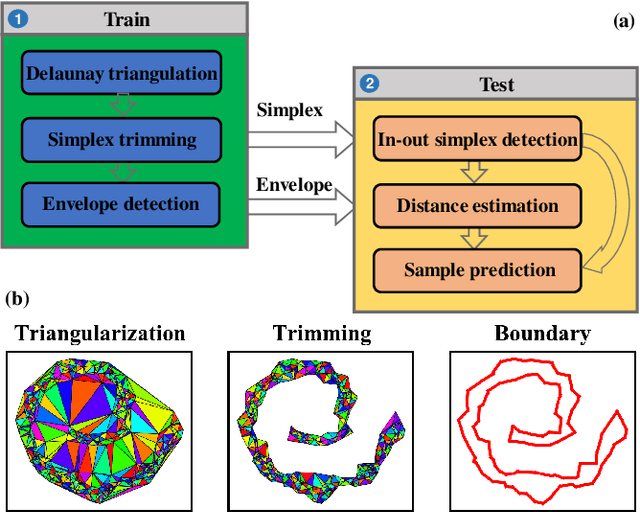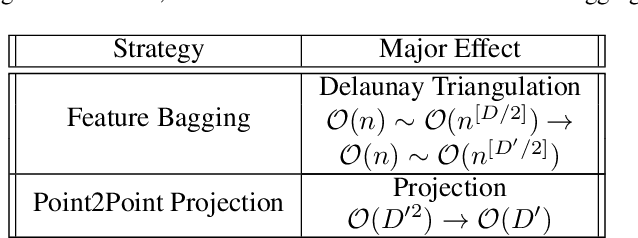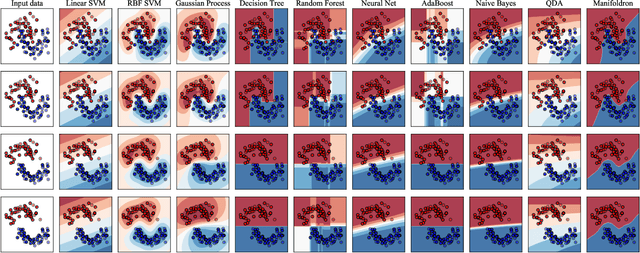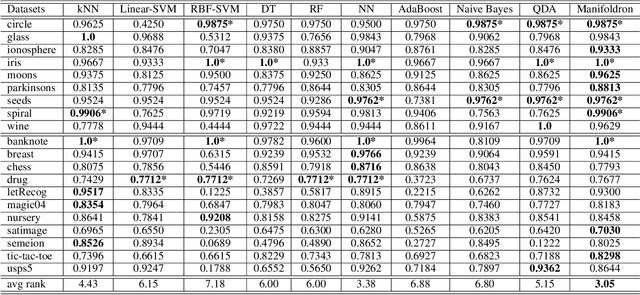Manifoldron: Direct Space Partition via Manifold Discovery
Paper and Code
Jan 14, 2022



A neural network with the widely-used ReLU activation has been shown to partition the sample space into many convex polytopes for prediction. However, the parameterized way a neural network and other machine learning models use to partition the space has imperfections, e.g., the compromised interpretability for complex models, the inflexibility in decision boundary construction due to the generic character of the model, and the risk of being trapped into shortcut solutions. In contrast, although the non-parameterized models can adorably avoid or downplay these issues, they are usually insufficiently powerful either due to over-simplification or the failure to accommodate the manifold structures of data. In this context, we first propose a new type of machine learning models referred to as Manifoldron that directly derives decision boundaries from data and partitions the space via manifold structure discovery. Then, we systematically analyze the key characteristics of the Manifoldron including interpretability, manifold characterization capability, and its link to neural networks. The experimental results on 9 small and 11 large datasets demonstrate that the proposed Manifoldron performs competitively compared to the mainstream machine learning models. We have shared our code https://github.com/wdayang/Manifoldron for free download and evaluation.
 Add to Chrome
Add to Chrome Add to Firefox
Add to Firefox Add to Edge
Add to Edge